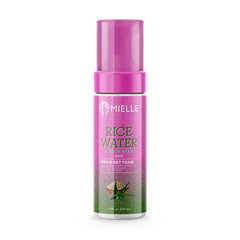Of all the days on the calendar dreaded by a woman with natural hair, wash day has got to be number one! We know it’s gotta be done, but there’s one part of the process that makes us rethink the whole thing: detangling.
It seems the tighter the curl we have, the more we put it off because we just… can’t… even! But in eight years of dealing with my thick, kinky hair, I’ve learned that there’s a right way to do detangle natural hair, and I’ve even learned a few tricks to make things go a little smoother. There are three main things you need. Come in closer and catch these tips!
The Right Technique
You may already know this little tidbit, but it might be worth stating anyways: you can’t treat your naturally textured hair the same way you did when it was relaxed. When your hair was straight – if you transitioned from relaxed hair, that is – you had little to no problems passing a comb or brush through your hair right from the roots on down. But kinks, coils, and curls need a different approach.
The best way to loosen tangles in textured hair is to start from the ends and gently work your way up. Avoid rushing through, which can cause the strands to snap and break, leading to split ends. Please, take your time. Also, dividing the hair into sections and working on one chunk at a time will make life so much easier.
The Right Product
From rice water for hair to hair oil, applying a product to your hair to aid in the detangling process is a huge plus! Working on hair that’s damp and covered in conditioner can give you the slip you need to get through the strands with ease. Mielle’s Mongongo Oil Hydrating Conditioner helps to soften the hair while giving it shine. You can also use an oil like our Mint Almond Oil on damp hair as part of a pre-poo routine to aid in detangling. You can even mix the two together to create major slip and make detangling a breeze! Keep a spray bottle handy to re-wet your hair if it begins to dry out.
The Right Tools
The tools you use to detangle your natural hair will depend on individual texture and personal preference. There’s no one rule of thumb for every natural girl, since every head of hair is different.
Wide-tooth combs were the gold standard at the start of the whole “natural hair movement,” especially if you had highly textured hair. These are still useful, but there are now a variety of brushes created specifically to work through tangles of even the kinkiest hair.
You might find it helpful to use your fingers to remove large tangles, and then go in with your detangling brush or comb. To cut down on manipulation and possible breakage, some ditch the tools and go for finger-detangling only. You may find that this works best either when you’re in the shower with the water running along your strands or if your hair is saturated in your product of choice. Whether you use a detangling comb, one of the brushes on the market, or your fingers, the rule of working from ends to roots still applies.
One final thing to keep in mind is that you will have some hair shedding while you detangle. We all naturally shed, on average, about 100 strands per day as hair goes through its cycle. So if you wear a style for a few days or longer, don’t be alarmed if you find more hair in your brush or your hand than usual.

















